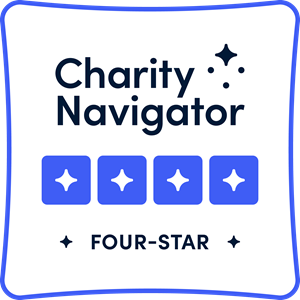Building Connection in Disconnecting Times
By Maia Tchetchik and Wendy Verba
Each day our reality changes. The news is urging us to stay away from each other when our tendency as Jews is to gather in crisis. We gain strength by being close, opening up, sharing rituals and taking care of those in need. Now, just when we need most to gather and find comfort together, we are driven further apart, and the best way to protect each other is through distance. The Israel trip, Bat Mitzvah, or OneTable Shabbat dinner we took for granted just two months ago now feel like an impossible dream.
As leaders in our communities, we are all facing the same challenge: how to foster connection and a sense of belonging in this new reality; how to make sure everyone is seen and heard even in isolation.
The first questions we tend to ask are practical and operational:
- How to run a virtual board meeting?
- How to live-stream Shabbat services from an empty sanctuary?
- How to teach kids remotely?
- What are alternatives to canceled galas and community events?
The key question though is: how do we structure human interaction differently during this time and still maintain, or even strengthen, connection and belonging?
The Federation’s "Culture of Belonging" team set out to gather the most creative ideas we could find to keep people connected during a time of social distancing. We heard from rabbis and educators, board chairs, CEOs and social entrepreneurs who are experimenting with ideas in two categories:
- Creating belonging and connection through virtual gatherings
- Taking care of each other
Gathering Virtually
As meetings go online and events are live-streamed, the limits of technology can set us further apart. We are two-dimensional faces on Zoom’s “Hollywood Squares,” or blank viewers of one-way live-casts. It takes extra effort and intention to build a connection around the technology.
Meeting in person and face-to-face interaction is always best. It enables multi-dimensional connection that can’t be replicated through technology. The irony is that the imposed isolation of COVID-19 may compel us to look more carefully at who is unseen and become more resourceful and more intentional about reaching out to each other.
We asked Michelle Tandowsky, an early adopter and leader in our belonging practice, and Board Chair of URJ Camp Newman, who regularly leads meetings for her geographically dispersed board, to share her best practices for convening groups by Zoom or other interactive platforms. Here are her tips for designing remote meetings for connection:
- Invite participants in advance to lead parts of the meeting to engage them more deeply.
- Require everyone to participate by video so all can be seen.
- Begin and end meetings and other gatherings with a prompt question for participants to share something about themselves. Check out our Culture of Belonging Toolkit for guidance and ideas.
- Invite participants to reflect on their experience of being isolated and how it’s affecting them.
- Lead text study in breakout rooms using a poem, psalm, or text from Talmud or Torah as an alternative to traditional D’var Torah (or text commentary) – it’s experiential, participatory, relational and a bridge for personal sharing and connection.
- If available with the platform you are using, use breakout rooms (especially with large groups) for sharing, text study, small group discussion or workgroups. Ask participants to lead small groups and share highlights.
- Offer the chatbox as an alternative to type questions or respond to a discussion – make sure you relate to what’s written there.
- Depending on your culture and who’s in the meeting – have some fun: celebrate birthdays, raise a toast, sing a shehechiyanu (blessing recognizing significant moments), invite “Good and Welfare” sharing.
- Note people who aren’t in attendance and arrange for someone to follow up with them.
- Following the meeting, reach out to individuals based on what they shared to thank them for a specific comment, inquire about a concern or invite them to help with the next steps.
Other Ideas for Gathering Online or Remotely
- Many synagogues are live-streaming services, Havdallah (closing ceremony of the Sabbath), and other holiday observances, inviting participants to join in lighting candles, making Kiddush (prayer over wine), or saying the Mourners Kaddish (prayer) from home. Our Federation professional team celebrated “ShaZoom” together this past Friday, sharing glasses of wine and moments of inspiration from the week.
- Make prayerbooks (siddurim) available for loan or download.
- Use two-way technology to study and learn together, sing-along, actively participate in programming and respond to questions in the chat room. One synagogue is offering a challah baking workshop on Zoom. Another is launching Zoom hangouts for parents after bedtime.
- An organization serving young families created a hashtag and asked members to post pictures of themselves in costume for Purim to share on the organization’s Instagram and Facebook groups.
- After canceling their Purim party, a JCC set up a drive-by booth for families to pick up “Purim at Home” kits and invited them to share photos of their home celebrations on social media.
- Schools are moving to distance learning options and exploring ways to keep kids engaged and connected using social media apps (TikTok videos anyone?).
Taking Care of Each Other
With seniors increasingly isolated in residential facilities on lock-down, schools closed for distance learning, travel canceled, and employees working from home (or worse, no longer able to work), we must look for ways to reach and help each other and fight back against loneliness and social isolation.
There were two core principles at play in the examples we found. First, they are systemic approaches – new habits and practices structured into communal activity rather than one-off actions by a few people. And secondly, they assume that we all have something to give and something to receive – each of us needs care at times and each of us is capable of caring for others.
Here are some ideas we gathered from our partners:
- Structured check-ins: synagogue members are assigned to call the regulars who don’t show up; students at a Jewish high school organized to call seniors for short conversations; employees working at home set up phone trees so each has someone to check in on and someone to check in on them; day school students are paired with younger buddies for weekly virtual chats, homework help, and games.
- Sort lists by neighborhood so people can connect with others nearby – even if physical contact isn’t possible (singing across balconies is the new Italian past-time, or reaching out via Nextdoor).
-
Identify vulnerable populations in your community and create an organized plan to reach them regularly:
- Assign a team to send texts, or, better yet, pick up the phone and ask “What do you need?” or “how can I help?” or just a simple “How are you?”
- Help with errands, “tech support,” or other needs.
- Kids can make pictures, cards or video messages to share with people stuck at home.
- Invite those in isolation to help others through phone calls and texts to check-in.
- Offer online content for children, seniors, and families – either live or recorded – from holiday celebrations to storytime to study sessions to craft lessons.
- Create small, fixed, online groups that can get together weekly (or bi-weekly) for a virtual lunch or happy hour to share and support one another, or organize for action. Identify someone who is responsible for leading each gathering with an opening prompt.
- Identify community resources – map the assets within your population. Are there professionals (therapists, educators, social workers) or content experts who can contribute in specific ways?
Jews (and their allies) are nothing if not adaptable, and we have the technology. As Theodore Roosevelt said, “Do what you can with what you have got, where you are.” The spread of the virus can drive us to our separate zones, or we can use our collective ingenuity to create connections and ensure that everyone in our communities is seen, heard and supported until we can physically gather again. And when we do, we may find we have new habits, practices, and a greater sense of belonging forged during our shared isolation.

Maia Tchetchik is an organizational development consultant and Jewish communal leader in the Bay Area, and Wendy Verba is the Federation's Managing Director of Community Impact. Together they lead the Federation’s efforts to build a Culture of Belonging throughout the Bay Area Jewish ecosystem.


